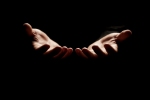August 19, 2014
The Eye of a Tornado
 I have been in the eye of a tornado.
I have been in the eye of a tornado.
Thirteen years ago, Cincinnati, not Ferguson, led the news. A white police officer shot and killed an unarmed black teen in a dark alley. People took to the street, protesting, rioting, looting. Stores were burned, curfews set, a city pitched to the brink.
I covered social justice issues for the metropolitan newspaper, but I was also pregnant with our first child, so much of my reporting was carried out from the safety of the newsroom.
A month later, the city tensed again as it awaited the decision by a grand jury on whether to indict the officer—and on what charges.
My assignment for the day was to follow one of the community’s leading African American preachers. He was a strong voice of protest but also seen as a bridge between the police department and the neighborhood. My editors and I thought this would be a safe position for a seven-month pregnant reporter.
The day was harried, with the preacher taking phone calls and meetings, scribbling notes and talking with people in the halls and on the streets. Around dinnertime, the indictments returned, with a far less charge than many people, especially in the African American community, thought was just.
We heard the rattle about the same time. In an instant, the empty sanctuary was flooded with people. Many wore bandanas, obscuring their faces. They carried signs and sticks and more anger than I’d ever seen.
I slid my reporter’s notebook under my leg and hunched my shoulders, trying to fold into myself.
A couple of young African American men stepped to the front of the worship space, conferred with the pastor, and then took the microphone.
They laid out the grievances in a bitter, taut call-and-response with the crowd. And then they planned the night’s protests.
In the first days after the teen was shot, people took to the street in frenzy, rage fueling the throngs into a chaotic protest. But this night was different. There were leaders directing people to areas: the police station, city hall, a nearby gentrified community (“They think they’re high and mighty on the hill. We’re taking our fight to them.”) The leaders also gave pointers: keep your face covered, don’t directly engage police officers, don’t carry a weapon, stay in groups.
And then as quickly as a tornado touches down, the crowd was gone, their chants fading into the streets.
Not until the pastor touched my shoulder did I breathe. I didn’t even realize my hands had instinctively covered my stomach, offering feeble protection for my baby. Shaking, I returned to the newsroom. Photographers set out for the locations mapped out in the church.
And I tried to write about the encounter. But how do you describe a tornado? How do you separate your self and your own fears from the story? Even if I think rioting is the wrong response, how can I possibly know the depth of rage and despair or understand the utter sense of injustice and hopelessness?
As I started to type, I called upon the only power that I knew was big enough to embrace all sides of the unfolding trauma. Just as I had in the pew an hour earlier, I prayed.





